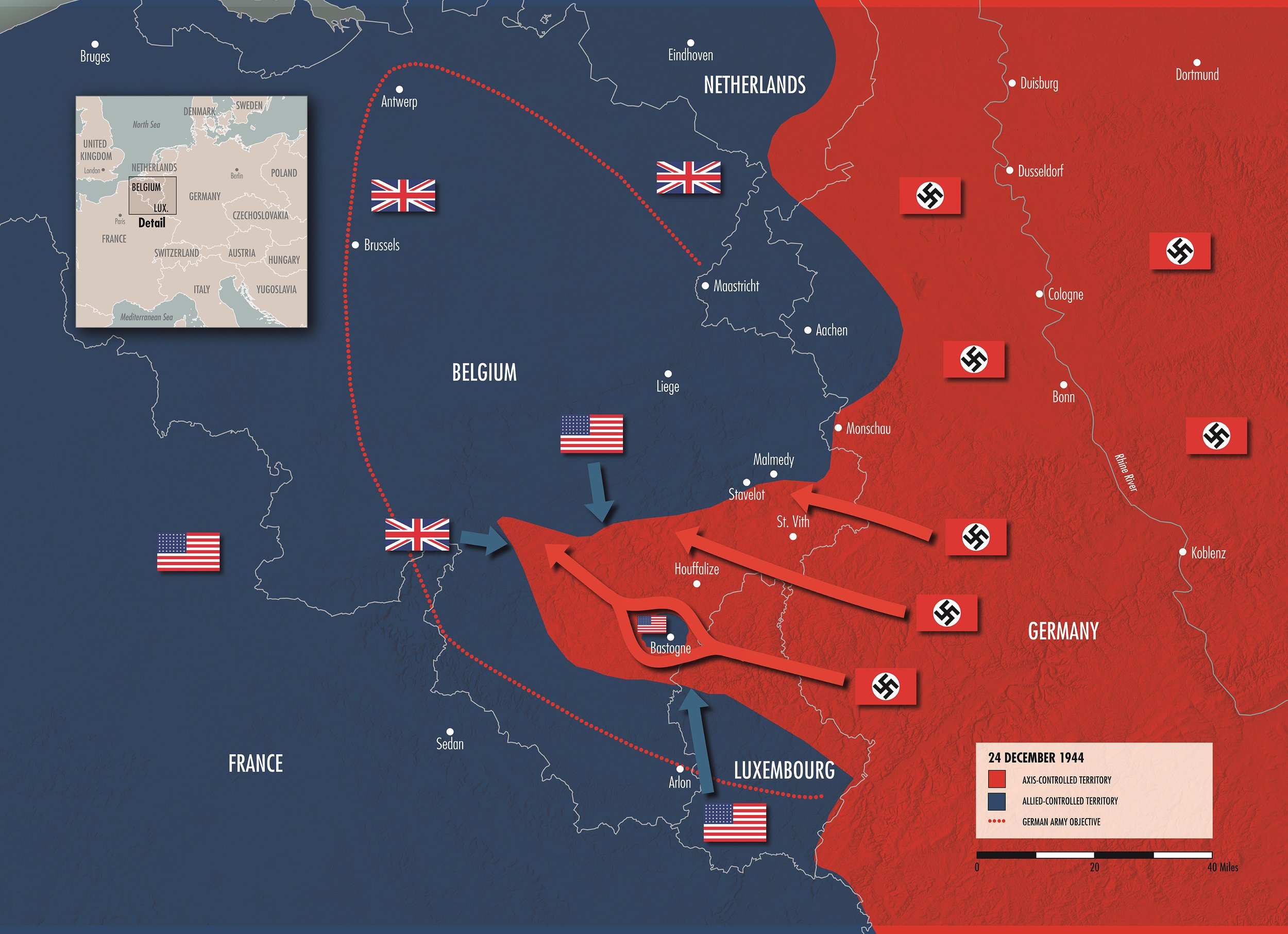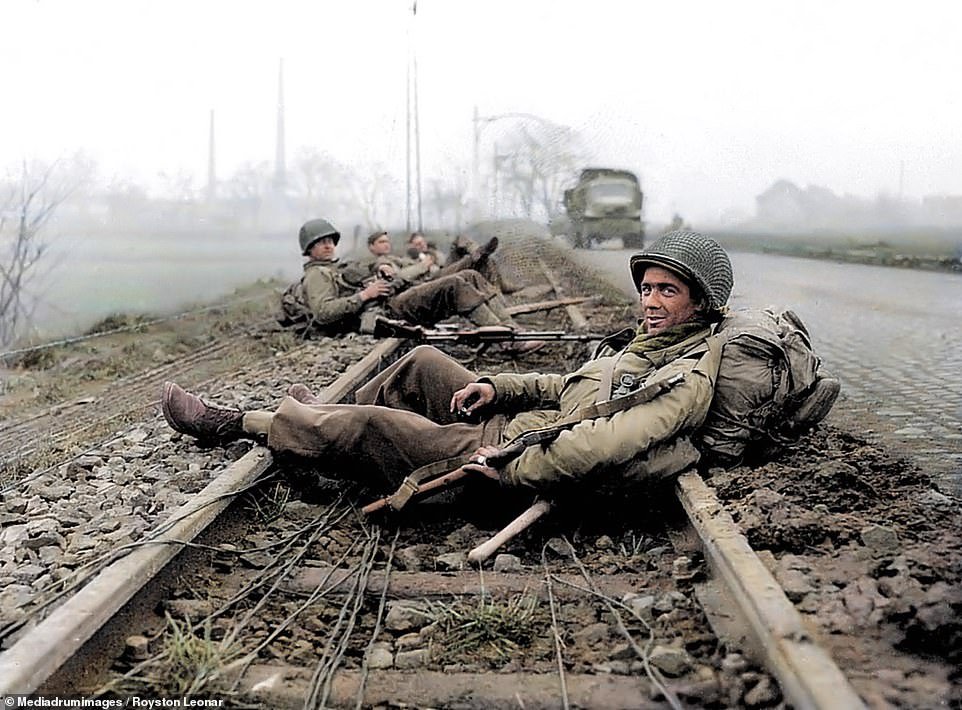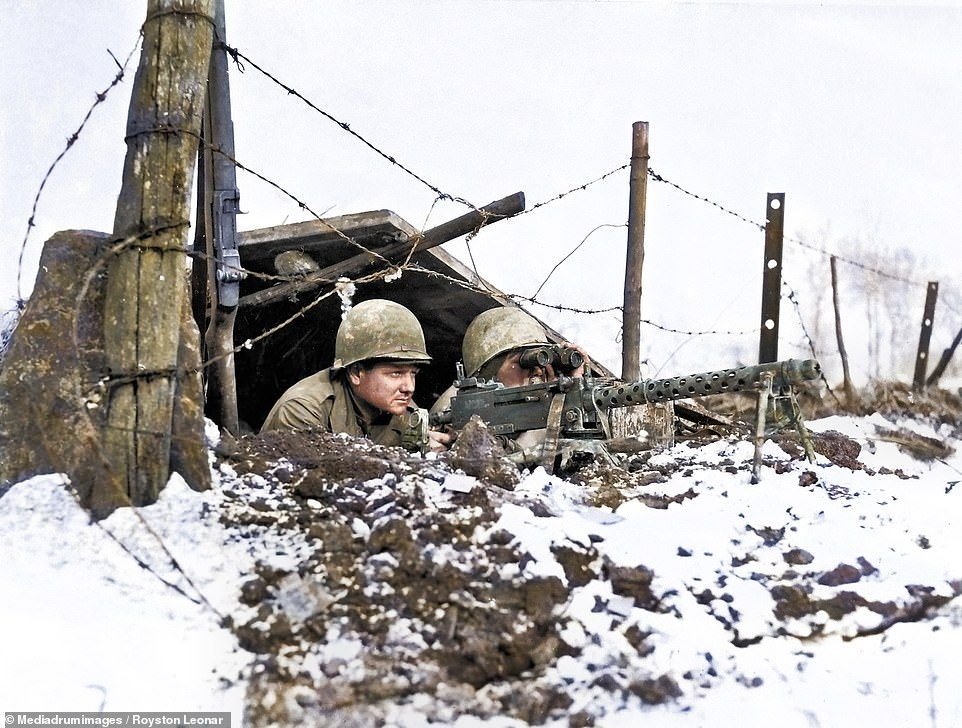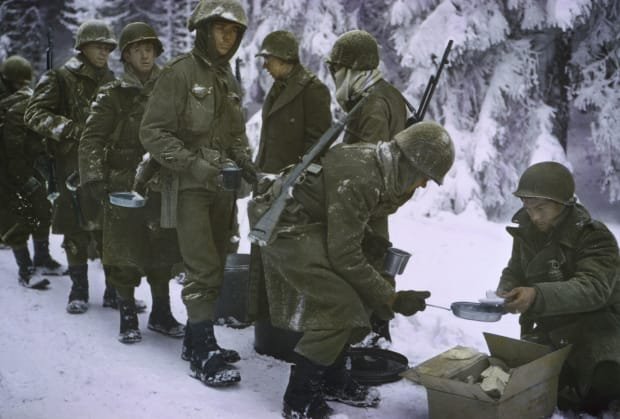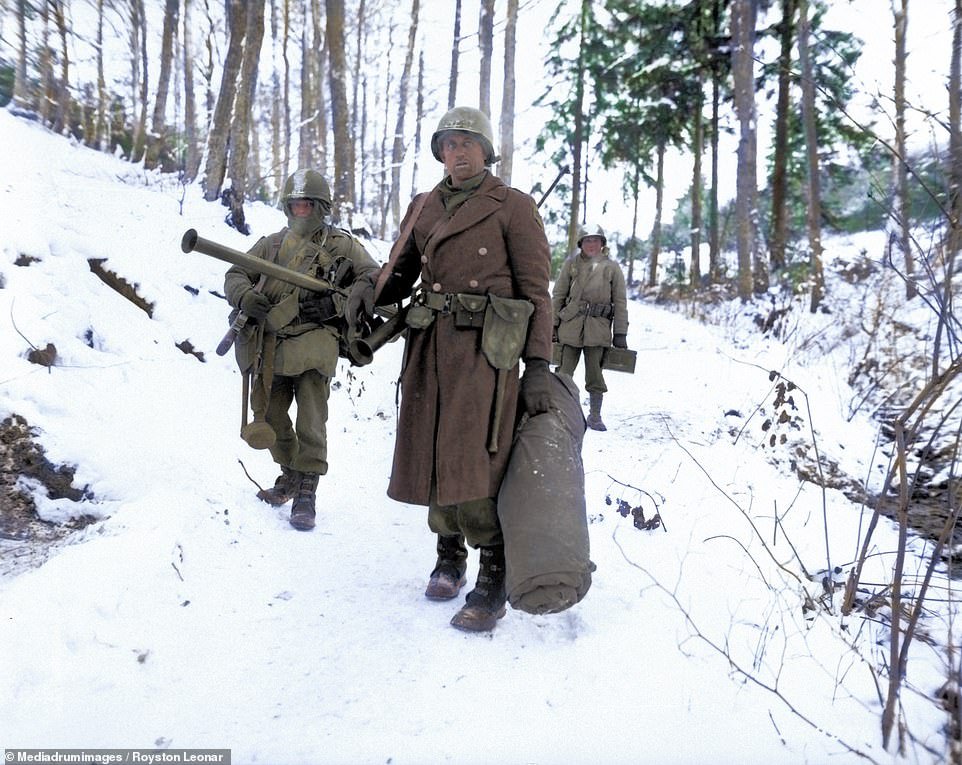For America: Fog of War – A Brief History on The Battle of the Bulge
Introduction
Nearing the end of 1944, the Allied forces were making steady progress in crushing the Axis powers of WWII across the European continent. As December approached, the frontlines along the western front were slowly stabilizing as units began to rotate to the rear as intelligence had suggested the German Army, the Wehrmacht, was basically spent and Allied troops were in desperate need for a refit.
Initial Attack
On the 16th of December, American troops in the Ardennes region of Belgium were thrust into a major defensive battle as over 30 infantry divisions, comprised of 200,000 German soldiers, supported by 5 Panzer divisions consisting of about 1,000 pieces of armor, assaulted the American positions. This final large-scale assault by Nazi Germany in the west created a large bulge in the Allied lines, hence how the battle got its name. American and Allied forces desperately fought to halt and turn back the German assault.
Battle Plan
The American troops holding this area did not expect armor spearheads to come crashing into their positions, as this region of the Ardennes was heavily forested, and the road network was thought not to be able to support such maneuvers. The German plan was to smash through the American lines, and in the ensuing chaos split the Allied frontlines in two, encircling a large pocket of Allied troops. They would also race to the port of Antwerp to capture the large stockpiles of fuel and war material, to resupply themselves and keep the war in the west going.
American Resistance
Although stunned, American troops across the Ardennes front began to reorganize and put-up a stiff resistance. It took over a day for the Germans to make clean advances throughout the battlefront, while other areas of the initial frontline would hold awhile longer. Unfortunately, during the early days of the battle, several massacres occurred. German units, especially Nazi SS units, did not want to lose the momentum of the assault, and opted to slaughter captured Allied soldiers instead of taking them in as prisoners of war.
Despite the tenacious German assaults, the American resistance was enough to slow the German advance. Although the Germans punched deeper and deeper into the American lines, they were successively slowed and stalled by unrelenting American units on the battlefield. On several occasions, small groups of American combat engineers skirmished with German armor columns, delaying their attacks, but more importantly buying enough time for their teams to destroy key bridges and roadway infrastructure.
By slowing the German assault, reinforcements were rushed into key areas of the along the front lines. Over the course of the first and into the second week of the battle, the 101st Airborne Division would make their now legendary defensive stand in and around the Belgian town of Bastogne. Bastogne was one of the key crossroad towns the Germans needed to capture very early in their attack. However, the 101st managed to secure and defend the town despite being surrounded, outnumbered, lacking major equipment, and short on basic supplies like cold weather gear. Despite all these odds, the 101st Airborne Division, and other American units within the bulge fought and began to stall and deny the Germans any further success.
The Offensive Begins to Stall
The delays to the German timetable began to cause major issues for the attack, as the lead elements had planned on resupplying at multiple Allied supply dumps along the attacking corridor; the Germans could barely muster enough supplies to initiate and sustain the fight for a limited amount of time. As a result, the attack began to sputter and stall across the large bulge that had now formed within the American lines.
After about two weeks of intense fighting, the German advance ceased, due to the heroism exhibited by American soldiers across the bulge. In failing to rapidly capture many bridges, towns, and road junctions, like Bastogne, the German advance was stopped, and the Germans were forced to hold their ground as their leadership tried to conjure a solution from the jaws of defeat.
American Counterattacks
With the frontlines within the bulge stabilizing around the end of December, Allied forces could assess, regroup, and most importantly resupply their forces as they planned to swiftly counterattack the German army. Soon after New Year's Day 1945, the American 1st Army and other units would begin to counterattack the Germans, with major operations concluding at the end of January 1945.
Conclusion
By the end of January, the American and Allied lines would be reestablished in the region, and with the bulge eliminated so too were the last gasps of the German Army in the west. The German’s had used up the last of their armor, best trained troops, and supplies in the west and could only muster enough power to stall and maneuver in retreat as the Allies pressed on the attack. The American Army suffered nearly 100,000 casualties in the Battle of the Bulge, making it one of the costliest battles it would ever fight. The sacrifice and shear tenacity of the American soldiers helped turn the tide of battle and lead to the enemy's demise.
References (In order of use)
https://www.history.com/topics/world-war-ii/battle-of-the-bulge
https://www.britannica.com/event/Battle-of-the-Bulge
https://encyclopedia.ushmm.org/content/en/article/battle-of-the-bulge
Suggested Images:
https://www.iwm.org.uk/history/what-you-need-to-know-about-the-battle-of-the-bulge
https://www.eisenhowerlibrary.gov/research/online-documents/ardennes-campaign-battle-bulge


